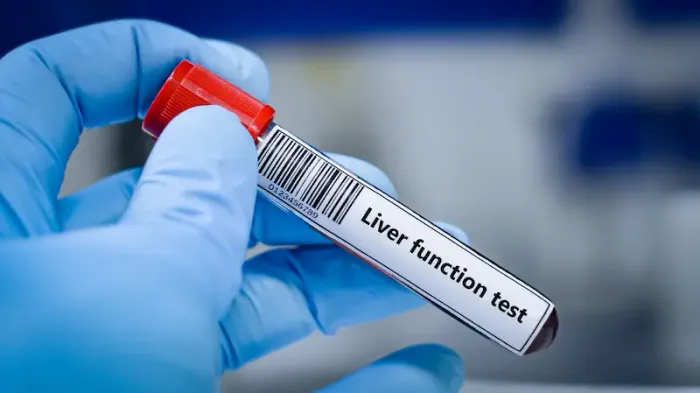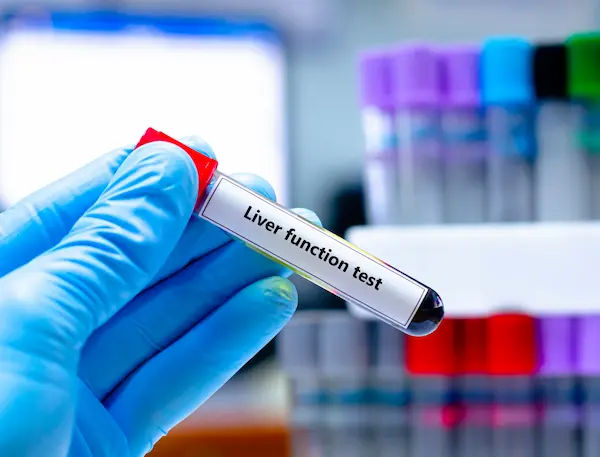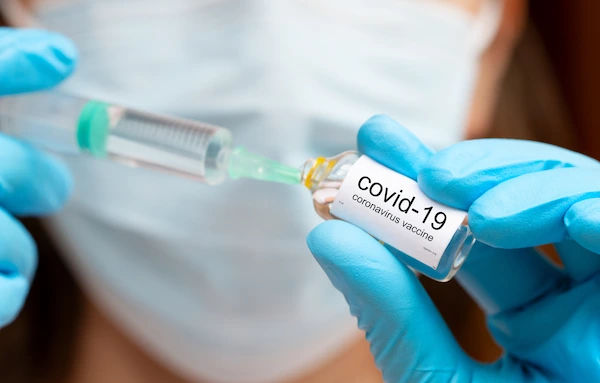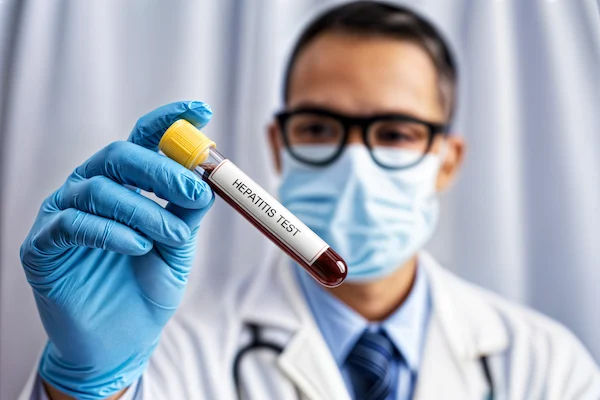Guide to Liver Function Test
Understand what a Liver Function Test (LFT) is, what the key markers (like ALT, AST, Bilirubin) indicate, and why this blood panel is crucial for diagnosing and monitoring liver health.

Written by Dr. Md Yusuf Shareef
Reviewed by Dr. Shaik Abdul Kalam MD (Physician)
Last updated on 22nd Oct, 2025

Introduction
If your doctor has ordered a liver function test, you’re not alone. Millions of people get an “LFT” each year to check how the liver is doing—whether it’s processing nutrients, filtering toxins, making proteins, or helping your blood clot. The term can be confusing: a liver function test is actually a panel of blood tests that looks at enzymes, bile pigments like bilirubin, and proteins that reflect both liver injury and how well the liver performs its jobs.
In this clear, practical guide, you’ll learn what a liver function test includes, why it’s ordered, how to prepare, and how to make sense of your results. We’ll explain common patterns (like hepatocellular vs cholestatic), typical reference ranges, and what can cause temporary bumps vs persistent abnormalities. You’ll also get step-by-step advice on what to do if your numbers are high, plus evidence-based ways to protect and improve liver health. Along the way, we’ll share examples and key facts from trusted medical sources, so you can discuss next steps confidently with your clinician. Whether you’re screening for risk, monitoring a medication, or following up on symptoms, this guide will help you use your liver function test wisely.
What Is a Liver Function Test (LFT)?
A liver function test is a blood panel that evaluates markers related to liver injury and liver performance. Despite the name, not all components measure “function”; many measure liver cell irritation or damage (enzymes), while others show how well the liver is synthesizing proteins or handling bile. You may also see it called a “hepatic panel” or “liver panel” .
The basics of liver function tests
LFTs typically include:
• Enzymes that leak into the blood when liver cells are irritated or damaged (ALT, AST).
• Markers of bile flow (ALP, GGT) that rise when bile ducts are blocked or bile flow is impaired.
• Bilirubin (total and direct), a breakdown product of hemoglobin that the liver processes and excretes.
• Proteins made by the liver (albumin, total protein) and sometimes clotting measures (PT/INR), which reflect the liver’s synthetic function .
Common names: liver panel, hepatic profile, LFTs
• Different labs or clinics may use different names, but they refer to largely the same set of tests, sometimes with small variations (for example, some panels include only enzymes and bilirubin, while the PT/INR may be ordered separately) [10].
What liver “function” really means
Think of LFTs in two buckets:
1) Injury/cholestasis: ALT, AST, ALP, GGT, and bilirubin tell you if the liver is inflamed or bile flow is impaired.
2) True function: Albumin and PT/INR reflect how well the liver is making proteins and clotting factors. Abnormalities here can signal more advanced or acute dysfunction .
Unique insight: One isolated abnormal value is less meaningful than trends over weeks. Ask for your prior results. Small variations are common; a pattern over time is more telling than a single snapshot. Consult a Top Hepatologist
What Does an LFT Include?
Enzymes: ALT and AST (hepatocellular injury)
• Alanine aminotransferase (ALT) is more liver-specific; aspartate aminotransferase (AST) is also found in muscle and heart. Elevations often suggest hepatocellular injury from fatty liver, viral hepatitis, alcohol, or medications . Example: After intense exercise, AST (and sometimes ALT) can rise temporarily due to muscle breakdown—one reason doctors may re-check after rest .
Cholestasis markers: ALP and GGT
• Alkaline phosphatase (ALP) is present in bile ducts but also bone; gamma-glutamyl transferase (GGT) helps identify if an elevated ALP is liver-related. When both ALP and GGT are high, cholestasis (bile flow problem) is more likely. High ALP with normal GGT can point to bone sources .
Bilirubin: total and direct
• Bilirubin becomes elevated when the liver can’t process or excrete it, or when bile ducts are blocked. Indirect (unconjugated) elevation can also occur with increased red blood cell breakdown. Visible jaundice usually occurs when total bilirubin rises above about 2–3 mg/dL .
Proteins: albumin and total protein
• Albumin helps maintain fluid balance and transport hormones. Low albumin can reflect chronic liver disease but can also result from malnutrition, kidney loss, or inflammation .
Clotting and synthesis: PT/INR (H3)
• The liver makes clotting factors. Prolonged PT/INR suggests impaired synthetic function or vitamin K deficiency and carries clinical importance, especially in acute liver failure or advanced cirrhosis .
Unique insight: Pairing tests is powerful. ALP up + GGT up suggests liver/bile duct origin; ALP up + GGT normal suggests a bone source. Similarly, assessing bilirubin alongside ALT/AST clarifies whether injury is blocking bile excretion.
When and Why Is a Liver Function Test Ordered?
Symptoms and signs (H3)
• Doctors order LFTs when you have jaundice (yellow eyes/skin), dark urine, pale stools, right-upper abdominal pain, severe fatigue, nausea, unexplained itching, or swelling in the abdomen/legs . If symptoms persist beyond two weeks, consult a doctor online with Apollo 24|7 for further evaluation.
Screening high-risk groups (H3)
• LFTs are common in people with metabolic risks (overweight, diabetes, high triglycerides), heavy alcohol use, viral hepatitis exposure, or family history of liver disease . Nonalcoholic fatty liver disease (now often called MASLD/MAFLD) affects roughly a quarter of adults worldwide, making mild enzyme elevations common in primary care .
Monitoring medications and chronic conditions (H3)
• Statins, anti-tuberculosis drugs, methotrexate, amiodarone, and some supplements (e.g., high-dose green tea extract, certain bodybuilding products) can elevate enzymes . Physicians monitor LFTs when starting or adjusting such medications. LFTs also track known liver disorders, such as hepatitis B/C or autoimmune hepatitis .
Unique insight: The decision to test often blends symptoms plus risk context. Even without symptoms, periodic LFTs may be appropriate if you have diabetes or features of metabolic syndrome.
Preparing for the Test and What to Expect
Fasting, alcohol, and medication adjustments (H3)
• Many liver panels don’t require strict fasting, but your clinician may order LFTs with a fasting lipid panel, so follow instructions. Avoid alcohol for 24–48 hours before testing to reduce transient enzyme elevations and bilirubin changes . Discuss any medications or supplements, including acetaminophen, as high doses can affect results. Do not stop prescription medicines without medical advice.
The blood draw, timing, and minor risks (H3)
• Blood is collected from a vein in your arm. Risks are minimal: a brief pinch, slight bruising, or lightheadedness in some people . Results typically return within 24–48 hours depending on the lab.
Home collection and convenience options (H3)
• If getting to a lab is difficult, consider home collection services. Apollo 24|7 offers a convenient home collection for tests like the liver function test, vitamin D, or HbA1c, helping you test on your schedule.
Unique insight: Hydration can affect albumin concentration slightly (dehydration can make it appear higher). Aim for your usual fluid intake before the draw unless told to fast.
Understanding Results: Ranges, Ratios, and Patterns
Typical reference ranges (and why they vary by lab)
Reference ranges vary by laboratory and method. Many labs cite approximate ranges like:
• ALT: ~7–56 U/L
• AST: ~10–40 U/L
• ALP: ~44–147 U/L
• Total bilirubin: ~0.1–1.2 mg/dL
• Albumin: ~3.5–5.0 g/dL
These are examples only; always use your lab’s ranges [10]. Some expert groups suggest lower “healthy” upper limits for ALT in women vs men .
Patterns: hepatocellular vs cholestatic vs mixed
• Hepatocellular: ALT/AST disproportionately high (e.g., fatty liver, viral hepatitis, medication-induced injury).
• Cholestatic: ALP and GGT disproportionately high (e.g., gallstones, bile duct obstruction).
• Mixed: Both sets are notably elevated.
• A simple “R ratio” (ALT/ULN divided by ALP/ULN) helps clinicians classify patterns in drug-induced liver injury .
Synthetic function: albumin and INR as “how well” the liver works
Low albumin and elevated INR are red flags for impaired function (e.g., advanced cirrhosis) or acute failure, especially if bilirubin is high and you feel unwell .
Unique insight: Rate-of-change matters. A sudden several-fold jump in ALT/AST (e.g., >10× normal) is more concerning than a mild, stable elevation and may need urgent evaluation.
Common Reasons for Abnormal Liver Tests
Short-term causes (illness, strenuous exercise, meds) (H3)
Viral infections, heavy exercise, dehydration, alcohol intake, or recent acetaminophen can nudge numbers temporarily. For example, strenuous training can raise AST (and ALT) for several days; repeat testing after rest often normalizes values . Many medications and herbal supplements can also cause elevations (drug-induced liver injury).
Fatty liver disease (NAFLD/MAFLD) and alcohol-related liver disease
Fatty liver related to metabolic health is a leading cause of mild ALT elevation. In alcohol-related liver disease, AST may exceed ALT (often AST:ALT ratio >2), with GGT frequently elevated . Lifestyle changes typically improve enzymes within weeks to months.
Viral hepatitis, autoimmune disease, and biliary obstruction
Chronic hepatitis B or C may raise enzymes or, at times, be silent. Autoimmune hepatitis can affect younger or older adults and often shows elevated ALT/AST with positive autoimmune markers. Marked increases of ALP and bilirubin, with pain and fever, can suggest cholangitis or gallstones blocking the bile duct—the latter can require urgent care .
Special situations: pregnancy, children, and older adults
Pregnancy can raise ALP due to placental production; a high GGT helps distinguish liver origin. Reference ranges and causes differ in children (where bone growth affects ALP). In older adults, polypharmacy increases the chance of medication-related elevations [10].
Unique insight: If ALP is high, check GGT; if GGT is normal, think bone (growth, healing fractures, or bone disease), especially in children and adolescents.
What to Do If Your Liver Function Test Is High
Don’t panic—confirm, trend, and review exposures
Ask your clinician about retesting in 2–8 weeks while avoiding alcohol and unnecessary supplements and reviewing medications. One-off mild elevations are common and often normalize with simple changes .
Follow-up tests: repeat LFTs, ultrasound, viral serologies, fibrosis scores
Depending on the pattern, doctors may order hepatitis B/C tests, abdominal ultrasound to check for fatty liver or bile duct dilation, and noninvasive fibrosis scores such as FIB-4 (uses age, AST, ALT, platelets) to estimate scarring risk . Persistently abnormal tests may prompt referral to a hepatologist and elastography (FibroScan).
When to seek urgent care (red flags)
Go to urgent care/ER if you have intense right-upper quadrant pain with fever, new confusion, severe vomiting, rapidly rising jaundice, or bleeding. These could indicate biliary obstruction, acute cholangitis, or acute liver failure . If your condition does not improve after trying these methods, book a physical visit to a doctor with Apollo 24|7.
Unique insight: Time your retest wisely. Retesting too soon (e.g., days after a marathon or illness) may not show a true baseline. Two to four weeks of “liver rest” (no alcohol, careful acetaminophen, healthy diet) can provide a clearer picture.
Improving and Protecting Liver Function
Weight, diet, and activity for metabolic health
For fatty liver, a 7–10% weight loss improves liver enzymes and can reduce liver fat and inflammation in many people. Diets emphasizing whole foods, fiber, lean proteins, and reduced added sugars help. Regular physical activity (150–300 minutes/week) improves insulin sensitivity and liver fat independent of weight loss . Long-tail keyword to include: fatty liver blood tests.
Alcohol, acetaminophen, and supplement safety
If your liver function test is high, avoid alcohol until clarified. Acetaminophen is generally safe at recommended doses, but exceeding daily limits or combining with alcohol is risky. Many “natural” supplements can injure the liver; discuss all products with your clinician. Long-tail keyword to include: medications that affect liver enzymes.
Vaccinations and preventive care
Vaccines for hepatitis A and B protect the liver; people with chronic liver disease especially benefit. Manage diabetes, cholesterol, and blood pressure to reduce liver stress. If symptoms persist beyond two weeks, consult a doctor online with Apollo 24|7 for further evaluation and tailored advice.
Unique insight: Sleep and liver health are linked. Poor sleep and sleep apnea correlate with worse metabolic liver disease; treating apnea and improving sleep hygiene can improve enzyme trends over time.
Myths vs Facts About LFTs
“Normal LFTs mean a normal liver”—not always
People with early cirrhosis can have near-normal enzymes; albumin and INR may better reflect advanced disease .
“Any elevation equals damage”—context matters
Mild, transient bumps are common and often reversible; patterns, symptoms, and trends guide importance .
“Detox” cleanses vs evidence-based liver care
Detox kits are unproven and sometimes harmful. The liver already “detoxes”; the best support is limiting toxins (alcohol), healthy diet, and managing metabolic risks.
Cost, Frequency, and Access
How often to test if you’re at risk
For people with diabetes or fatty liver risk, clinicians may check LFTs yearly or more often during medication changes. Frequency should be personalized.
Insurance and cost considerations
In many healthcare systems, a liver panel is relatively low-cost compared with imaging. Combining it with other routine labs may reduce visits.
Telehealth and home testing logistics
Telehealth can streamline follow-up. Apollo 24|7 offers home collection for LFTs, making it easier to trend your results over time.
Case Snapshots: Interpreting Real-World Results
Mild ALT/AST rise after marathon
A runner’s AST 2× upper limit, ALT 1.5× after a race. Rest, hydration, no alcohol, repeat in two weeks: normalized. Lesson: exercise-induced changes can mimic liver injury .
High ALP and GGT with gallstone symptoms
Colicky RUQ pain, fever, ALP and GGT elevated, bilirubin high → ultrasound shows bile duct stone. ERCP removes obstruction; enzymes fall . Lesson: ALP+GGT pattern points to cholestasis.
Low albumin and high INR in cirrhosis
Patient with swelling, fatigue: albumin low, INR high, bilirubin elevated. Imaging shows cirrhosis. Lesson: synthetic function markers signal severity and guide management .
Talking With Your Doctor
Questions to ask about your results
“What pattern do my tests suggest? What’s the likely cause?” “Should we repeat the liver function test after changes?” “Do I need imaging or viral tests?”
What to track over time (trends, symptoms, meds)
Keep a simple log: dates, values, alcohol intake, new meds/supplements, illnesses. Trends help your clinician interpret results accurately.
Glossary: Plain-English Definitions
• ALT/AST: Enzymes reflecting liver cell irritation.
• ALP/GGT: Markers of bile duct/bile flow issues.
• Bilirubin: Yellow pigment; high levels cause jaundice.
• Albumin: Protein made by liver; low can indicate chronic disease.
• PT/INR: Clotting time; higher suggests impaired liver synthesis.
Consult a Top Hepatologist
Conclusion
Your liver function test is more than a single number—it’s a story about how your liver is doing today and where it may be headed. By understanding what’s included in the liver panel, why certain markers rise, and how patterns point to specific causes, you can partner with your clinician to make smart, timely decisions. Remember that small, temporary bumps are common after illness, alcohol, hard exercise, or medication changes, while persistent or pattern-specific abnormalities deserve a deeper look with repeat testing, imaging, or viral studies.
If your results are abnormal, avoid panic—and avoid guesswork. Confirm, trend, and target the likely cause. Strengthen long-term liver health by managing weight, blood sugar, and cholesterol; limiting alcohol; using acetaminophen safely; and being cautious with supplements. Vaccinations against hepatitis A and B add another layer of protection. If symptoms persist beyond two weeks or you’re unsure how to act on your results, consult a doctor online with Apollo 24|7 for personalized guidance. And if your condition does not improve after trying these methods—or if red flags appear—book a physical visit to a doctor with Apollo 24|7.
With the right plan, most people can turn a confusing liver function test into clear next steps and a healthier future.
Frequently Asked Questions
1) What is the normal range for a liver function test?
Ranges vary by lab, but typical examples include ALT ~7–56 U/L, AST ~10–40 U/L, ALP ~44–147 U/L, bilirubin ~0.1–1.2 mg/dL, albumin ~3.5–5.0 g/dL. Always use your lab’s reference. Long-tail keyword: liver function test normal range. [10]
2) Do I need to fast before an LFT?
Often not, but your clinician may combine it with fasting labs. Avoid alcohol 24–48 hours before testing. Long-tail keyword: LFT test preparation.
3) My liver function test is high—what should I do?
Review alcohol, meds, and supplements; consider retesting in 2–8 weeks. Your doctor may order ultrasound or viral serologies. Long-tail keyword: liver function test high what to do.
4) Can exercise raise AST or ALT?
Yes. Strenuous exercise can temporarily increase AST (and sometimes ALT). Recheck after rest if you feel well. Long-tail keyword: ALT vs AST difference.
5) What does an elevated GGT mean?
GGT helps confirm that a high ALP is liver-related; high GGT with ALP suggests cholestasis, sometimes from bile duct issues or alcohol. Long-tail keyword: GGT test meaning.




